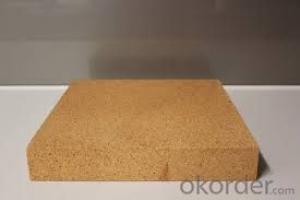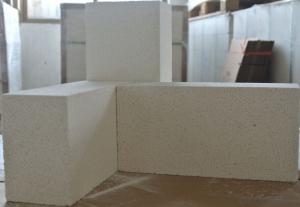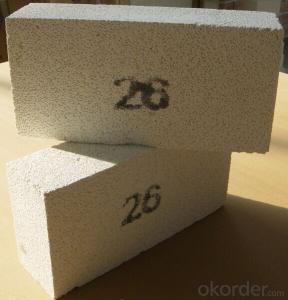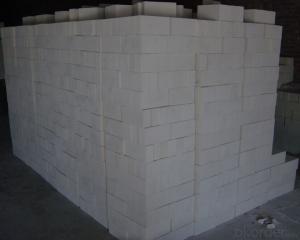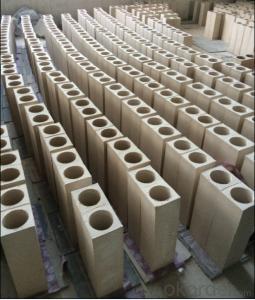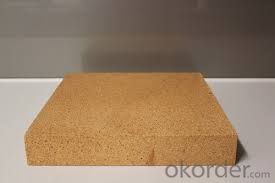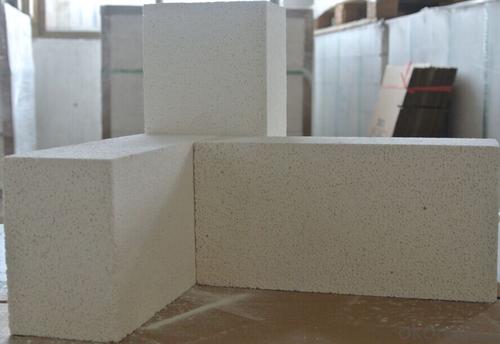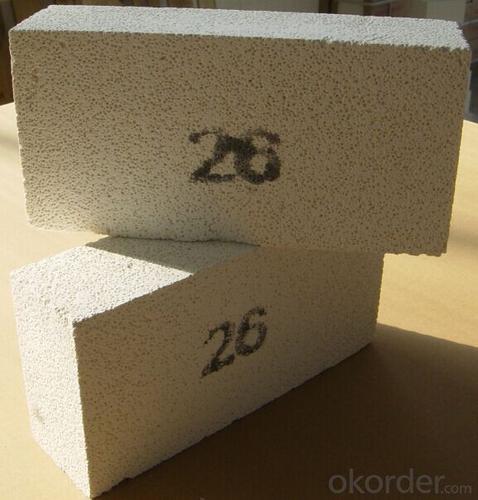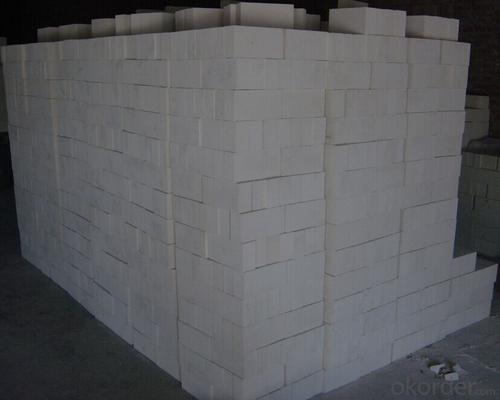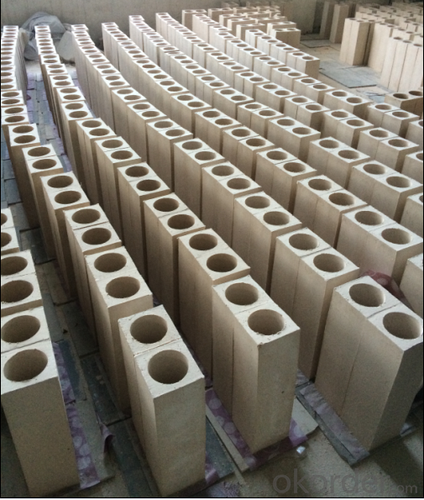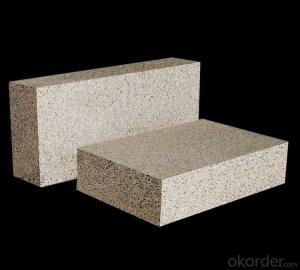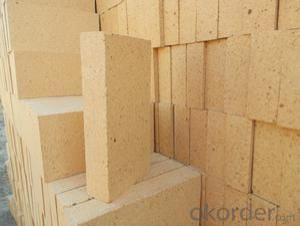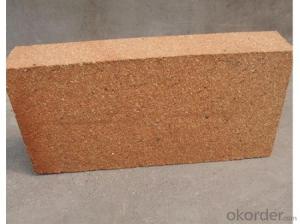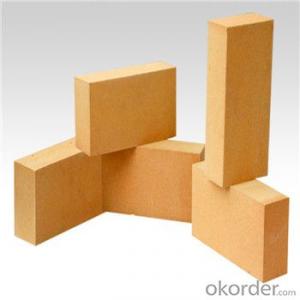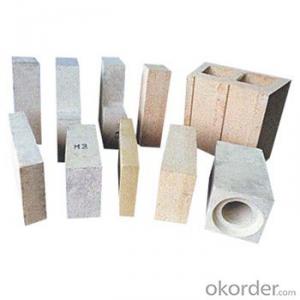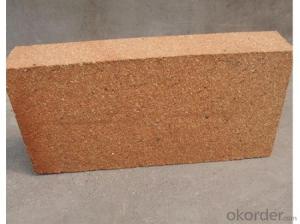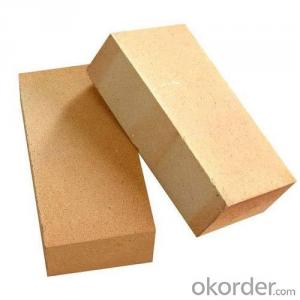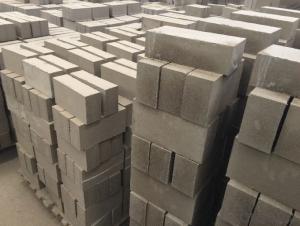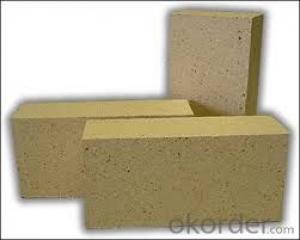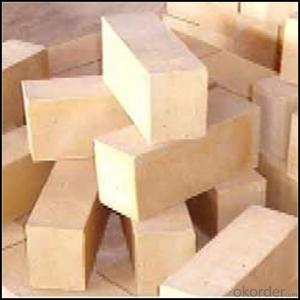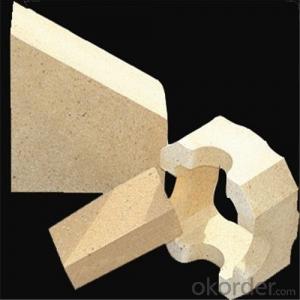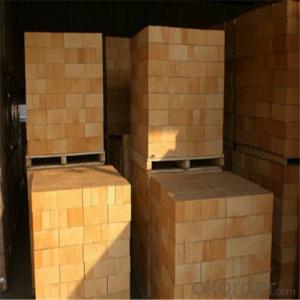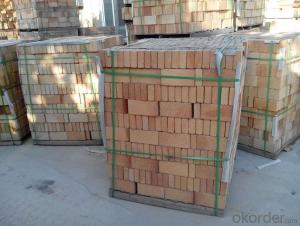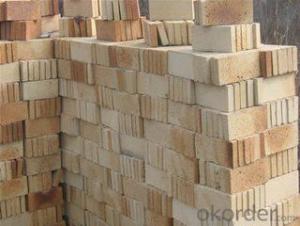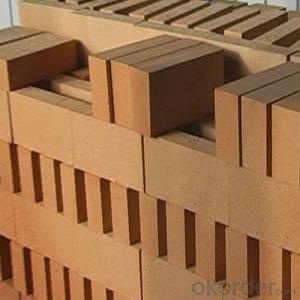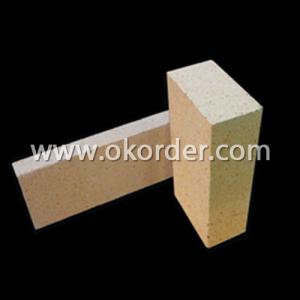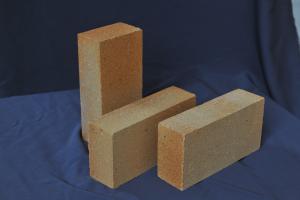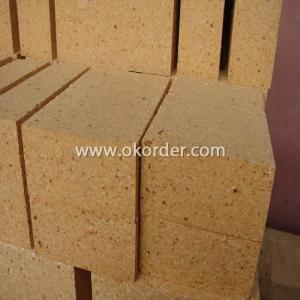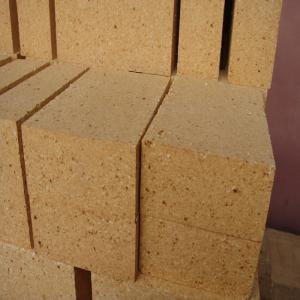Fireclay Brick for Glass Industry Refractory Bricks
- Loading Port:
- Qingdao
- Payment Terms:
- TT OR LC
- Min Order Qty:
- 2 m.t
- Supply Capability:
- 5000 m.t/month
OKorder Service Pledge
OKorder Financial Service
You Might Also Like
Brief discription for Clay brick of refractory brick for glass industry
CMAX Clay brick of refractory brick for glass industry are classified according to alumina content ranging from 48% to 90%.
CMAX Clay brick of refractory brick for glass industry are commonly used in blast furnace, hot blast furnace, the roof of electric furnace, teeming ladle, rotary kiln,regenerator, etc.
Brief features for Clay brick of refractory brick for glass industry
◆Low thermal conductivity
◆Excellent acid and base slagging resistance
◆High refractoriness
◆Excellent thermal shock resistance
◆Excellent mechanical strength
◆Good spalling resistance and wear resistance.
◆Good corrosion resistance.
◆High-temperature creep rate is quite low.
◆Good volume stability at high temperature.
◆Low bulk density, low thermal conductivity, good thermal insulation performance.
Technical data for Clay brick of refractory brick for glass industry
ITEM | UAL48 | UAL55 | UAL65 | UAL75 | UAL80 | UAL85 | ALP80 |
Refractoriness, ℃ | 1750 | 1770 | 1790 | 1790 | 1810 | 1810 | 1810 |
Apparent Porosity,% | 22 | 22 | 23 | 23 | 20 | 20 | 18 |
C.C.S, Mpa | 39 | 44 | 49 | 53 | 55 | 60 | 100 |
Refractories Under Load (0.2Mpa),℃ | 1420 | 1470 | 1500 | 1520 | 1500 | 1520 | 1550 |
Reheating Linear Change,% | 1450℃x2h 0.1~-0.4 | 1500℃x2h 0.1~-0.4 | 1500℃x2h 0.1~-0.4 | 1500℃x2h 0.1~-0.4 | 1550℃x2h -0.5~+0.5 | 1550℃x2h -0.5~+0.5 | 1550℃x2h -0.5~+0.5 |
Al2O3 Content , % | 48 | 55 | 65 | 75 | 80 | 85 | 82 |
FAQ
Q1:Are you a manufacture or trader?
A:Factory+trade(mainly factories,at the same time,we operates other related products).
Q2:Can we visit your factory?
A:Sure,welcome at any time,seeing is believing.
Q3:What's the MOQ of trial order?
A:No limit,We can offer the best suggestions and solutions according to your condition.
Q4:Which payment terms can you accept?
A:T/T,L/C are available for us.
Q5:After an order is confirmed,when to deliver?
A:15-25days after deposit.
- Q: How many years are the service life of chimney lining refractory brick?
- Capacitance magnesite, seawater magnesite, should be the alkaline refractory brick, magnesia-alumina spinel can absorb hydrogen fluoride, generally are magnesia brick, magnesium iron ore, forsterite, dolomite, magnesium dolomite, magnesium silica sand, magnesia-chorme spinel and magnesia chrome sand: Magnesia mineral, magnesium calcium sand, magnesite, magnesium dolomite sand, dolomite, mainly is cordierite
- Q: is it good to use firebricks to preserve the heat of rto furnace? Is there any other good ideas?
- 1. what variety and grade of refractory materials should be chosen to build all parts of the industrial furnace?; 2. is the origin of these materials be assured? mesothern resistance furnace, lightweight refractory brick, refractory fiber, bead brick of 1000 degrees; fuel heating furnace, refractory clay brick, high alumina brick, silica brick, carborundum brick, refractory castable, the plastic refractory of 1300 degrees; heat treatment furnace, refractory clay brick, refractory fiber of 1100 degrees; high temperature salt bath furnace, refractory clay brick, high alumina brick, zircon brick, refractory castable of 1300 degrees; high temperature resistance furnace, lightweight refractory brick, high aluminum bricks, lightweight alumina brick, lightweight refractory clay brick of 1400 degrees; molybdenum wire furnace, alumina brick, corundum brick, carborundum brick, finished alumina hollow ball product of 1650 degrees; cupola, refractory clay brick, carborundum brick, dolomite Brick, carbon brick, graphite brick of 1650 degrees; arc furnac, high alumina brick, silica brick, magnesia brick, magnesia brick, magnesia chrome... Corundum brick, carbon brick, magnesia chrome brick, magnesia brick, high aluminum brick, silica brick, finished alumina hollow ball product of 1700 degrees; cupola, refractory clay brick of 1650 degrees;
- Q: What are the reasons for the production of waste in the formation of fireclay bricks?
- The reasons for the production of waste when form fireclay bricks: Tile size is unqualified. This is due to the mold installation is not firm, the template transfers when molding; if the amount of material being added fluctuates largely, also can cause the body size changing. Ji Yangon Chi lie charge generation layer containing decyl poke pull and crack. The molding operation does not according to the principle of the light first and the thick later. At the initial pressure, the air doesn't releases, which causes the elastic aftereffect by repressing. Too much mud water, uneven mixture and inequal template all can make the body produce layer crack or crack. Twist. The template is used for too long, the template deforms, so raw brick deforms, the amount of water is too large, brick naturally deforms, causing the body twist. Miss edge and angle. Because of poor plasticity of mud, particles segregate, feeding back corner is not real, the body will appear side missing and angle modulation phenomenon. Bias voltage. Due to the deflection of the die head or the uneveness of mold bottom. Loose。 Due to insufficient feeding amount or insufficient pressure times.
- Q: How many pieces of porous brick is equal to one ton?
- Refractory bricks are generally classified into two types, that is, shapeless refractory materials and shaped refractory materials. Shapeless refractory material: Also known as castable refractory, is hybrid power material composed of a variety of aggregate or a kind of aggregate and one or more kinds of the mixture of adhesive particles, it should be used evenly mixed with one or more kinds of the liquid, which has strong liquidity. Shaped refractory material: The general making of firebrick, there are standard rules for the shape, can also temporarily process according to need of building and cutting. The following are the specifications. fireclay bricks 230*114*65 each block 3.0 - 3.6 kg; special-shaped fireclay brick 230*65/55*114 each block 2.8 - 3.3 kg; the reason for the weight's ranges is that because the quality is different, in general, heavy density, good quality!
- Q: 90 porous brick and ordinary shale brick, clay brick difference
- Porous brick refers to clay, shale and fly ash as the main raw material, porous brick after molding, roasting and hole rate of not less than 15%~30%, the pass is a round hole or non circular hole, the small size and number of loading sintered porous brick has a rectangular or circular hole, is not equivalent to as long as the bricks some hole. The utility model can directly replace the sintered clay brick, and is widely used for various bearing, thermal insulation, bearing and frame filling construction walls with wide popularization and application prospect.
- Q: how to test the high alumina refractory brick mixed alumina?
- The first thing before producing bricks is to test whether the aluminum content reaches the standards, general testing on raw materials. Second: the shaped high aluminum brick will be tested in some professional equipment, you can know it from the professional inspection departments.
- Q: What are the advantages and disadvantages of clay bricks?
- Advantages of clay bricks1. clay brick materials, cheap, durable, and fire prevention, heat insulation, sound insulation, moisture absorption and other advantages, is widely used in civil engineering. Waste brick can also be used as aggregate of concrete.2. waste bricks can also be used as aggregate for concrete.3. fly ash brick is made of fly ash as main raw material and mixed with cement material such as coal gangue powder or clay. It is made up of batching, molding, drying and roasting. It can make full use of industrial waste residue and save fuel.
- Q: Where are clay bricks or cement bricks?
- Are clay bricks made of ordinary buildings or clay bricks on refractory materials?. Ordinary clay brick building is a burning clay made of red brick, (that is, the original old house with a little red brick) due to its extensive use of native resources and have great pollution in firing, now in some city has banned the use of the.
- Q: The difference between clay bricks and clay bricks?
- Clay brick is a small building with artificial bulk. Also called sintered brick. Solid clay brick is one of the oldest building materials in the world. It is a building material that is loved by the people.
- Q: What is the raw material for the production of refractory bricks?
- Refractory raw material, sodium silicate as a binder, and lightweight aggregate, magnesium sand, magnesia calcium. Magnesium Oxide, bauxite, and then lightly burn: Hard refractory clinker
Send your message to us
Fireclay Brick for Glass Industry Refractory Bricks
- Loading Port:
- Qingdao
- Payment Terms:
- TT OR LC
- Min Order Qty:
- 2 m.t
- Supply Capability:
- 5000 m.t/month
OKorder Service Pledge
OKorder Financial Service
Similar products
Hot products
Hot Searches
Related keywords
